Songyang Academy, Zhengzhou – Ticket, Opening Hours, Location, and Highlights
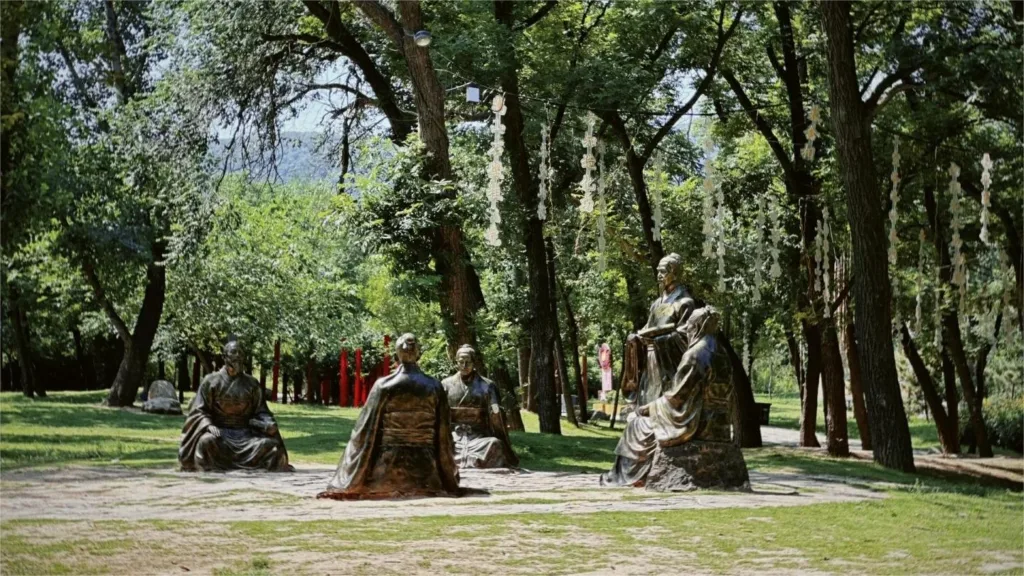

Songyang Academy (嵩阳书院), originally established as Songyang Temple in the 8th year of the Northern Wei Dynasty’s Taihe era (484 AD), served as a Buddhist center during its inception. It later transitioned into a Daoist hub during the Sui and Tang Dynasties. Notably, both Emperor Gaozong and Empress Wu Zetian utilized it as their temporary palaces on two occasions. However, it was during the Northern Song Dynasty that Songyang Academy gained its renown as a prestigious educational institution.
Distinguished scholars such as Fan Zhongyan, Cheng Yi, Cheng Hao, and Sima Guang lectured here, with Sima Guang completing portions of his monumental historical work, “Comprehensive Mirror to Aid in Government” (Zizhi Tongjian), within its walls. These scholarly activities not only solidified Songyang Academy’s position as one of the four foremost academies during the Northern Song Dynasty but also established it as a cradle of Neo-Confucianism.
The architectural layout of Songyang Academy follows Qing Dynasty standards, maintaining its traditional style. With a total area of over 9,000 square meters, the academy features five main courtyards aligned along the central axis and a total of 106 ancient buildings. These structures blend characteristics of both public and residential architecture, showcasing a harmonious balance. The surviving inscriptions, Buddhist sutra pillars, and ancient trees within the academy grounds bear witness to the significant historical events and the activities of numerous eminent figures who once graced its halls.
Оглавление
- Основная информация
- Расположение и транспорт
- Highlights of Songyang Academy
- Vlog about Songyang Academy
- Other Attractions in Taishi Mountain
Основная информация
| Предполагаемая продолжительность тура | 1 - 2 часа |
| Цена билета | 30 ЮАНЕЙ |
| Часы работы | 8.00 - 17.00 |
| Номер телефона | 0371-62830518 |
Расположение и транспорт
Songyang Academy is situated at the southern foot of Mount Song, near the Jueji Peak, in Dengfeng City, Zhengzhou, Henan Province. To reach the academy, visitors can take either the No. 2 or No. 6 bus from Dengfeng City, which will take them directly to the terminal stop near the academy. The journey typically lasts around 10 minutes.
Highlights of Songyang Academy
Various Ancient Architectures

Songyang Academy showcases a series of architectural marvels that reflect its historical and educational significance. Starting from the south and moving northwards, the main structures include:
Главные ворота: Also known as the Mountain Gate, the Main Gate was rebuilt under the supervision of Ye Feng, the magistrate of Dengfeng County, in the 13th year of the Kangxi reign of the Qing Dynasty (1677).
Ritual Gate: This gate, designed in the style of a memorial archway, bears the inscription “Gao Shan Yang Zhi,” serving as a reminder to students to behave respectfully and with propriety.
Hall of the Ancestors: Located after the second gate, this hall enshrines a standing statue of Confucius, the revered founder of Confucianism. Flanking the central statue are carved images of Confucius’ disciples – Yan Hui, Zisi, Zengzi, and Mencius. The west wall depicts brief biographies of Confucius’ 72 disciples and portraits of 12 ancient philosophers. The east wall features an introduction to the origin, development, and influence of Confucianism. This hall served as the place where students paid homage to Confucius.

Lecture Hall: The Lecture Hall is a three-bay, hard-pitched-roofed structure where scholars such as Cheng Hao and Cheng Yi, leading figures of the Song Dynasty Neo-Confucianism, once lectured. Inside, the east wall features a depiction of lectures by the “Two Chengs,” while the west wall lists the names and brief biographies of educators from the Song Dynasty who taught at Songyang Academy, along with details about the academy’s teaching methods and the evolution of ancient Chinese education systems.
Pan Pond: According to legend, Confucius often studied by the Pan Pond in his youth. To commemorate him, ponds were constructed within academies or schools, symbolizing reverence for the great sage. At Songyang Academy, students who passed the imperial examinations would traditionally perform a ritual of walking around the pond three times to express their gratitude to Confucius.
Library: The Library, the last addition to Songyang Academy, was initially constructed in the fifth year of the Shunzhi reign of the Qing Dynasty (1648) with funds donated by Wang Rizao, the governor of Henan Province. It was renovated in the fourth year of the Qianlong reign (1739) and underwent further restoration in 1989.
Han General Cypress Trees

Originally, there were three ancient cypress trees within Songyang Academy. During the Western Han Dynasty in the 6th year of the Yuanfeng era (110 BC), Emperor Wu of Han, Liu Che, visited Mount Song and was impressed by the towering and flourishing cypress trees. He subsequently granted them the titles of “First General,” “Second General,” and “Third General.” While the Third General Cypress was destroyed during the late Ming Dynasty, the First and Second General Cypress trees still stand. The First General Cypress measures 12 meters in height with a circumference of 5.4 meters. Its trunk reclines diagonally, and its dense canopy resembles a large umbrella shading the sky. The Second General Cypress stands at 18.2 meters tall with a circumference of 12.54 meters. It features a hollow passage through the lower part of its trunk, capable of accommodating five to six people.
Tang Dynasty Stele (Datang Bei)
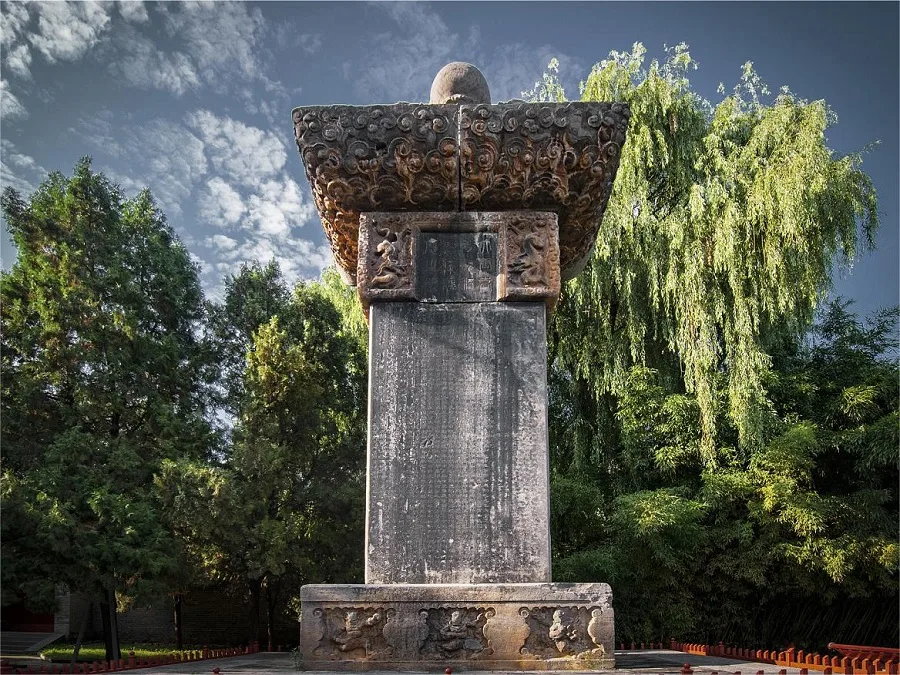
Erected in the third year of the Tianbao era (774 AD) of the Tang Dynasty, the Tang Dynasty Stele stands on the west side of the academy’s entrance. It measures 9.02 meters in height, 2.04 meters in width, and 1.05 meters in thickness, making it one of the largest stone steles in Central China. Comprising five parts – pedestal, body, inscription, cloud disk, and ridge – the stele bears an inscription of 1078 characters, primarily recounting the story of Sun Taichong, a Daoist at Songyang Academy, who attempted to refine elixirs for Emperor Xuanzong (Li Longji) of the Tang Dynasty.
Map of Dengfeng County

Engraved in the 21st year of the Wanli era (1593) of the Ming Dynasty, the Map of Dengfeng County measures 1.05 meters in height, 0.86 meters in width, and 0.2 meters in thickness. Crafted using shallow carving techniques and depicting scenes in a picturesque manner, the map provides a detailed representation of the geographical features, landmarks, rivers, roads, villages, and towns in the Dengfeng County area. It serves as a valuable material for researching the geography, cultural relics, and history of Dengfeng.
Vlog about Songyang Academy
Other Attractions in Taishi Mountain
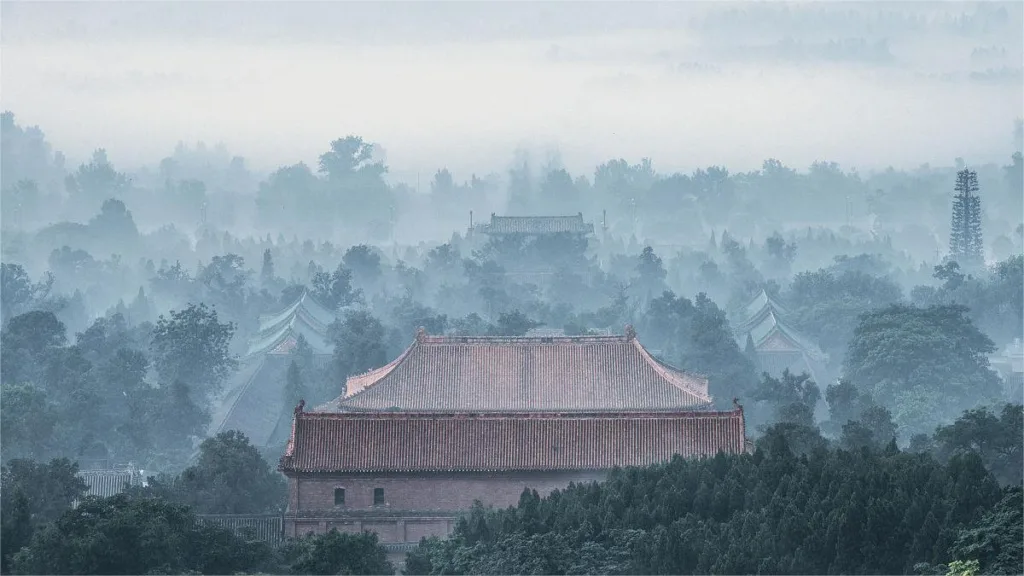
Zhongyue Temple
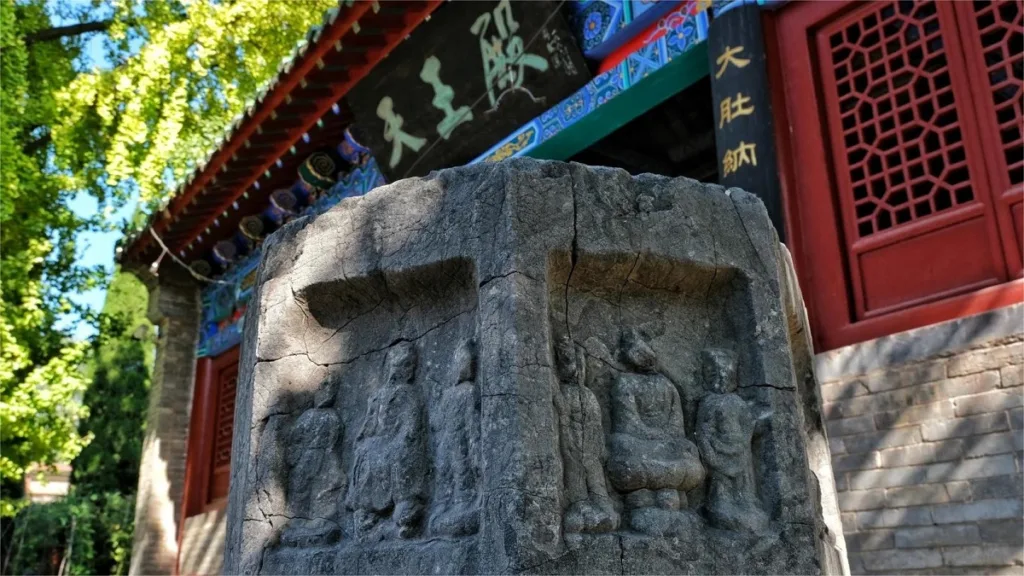
Yongtai Monastery
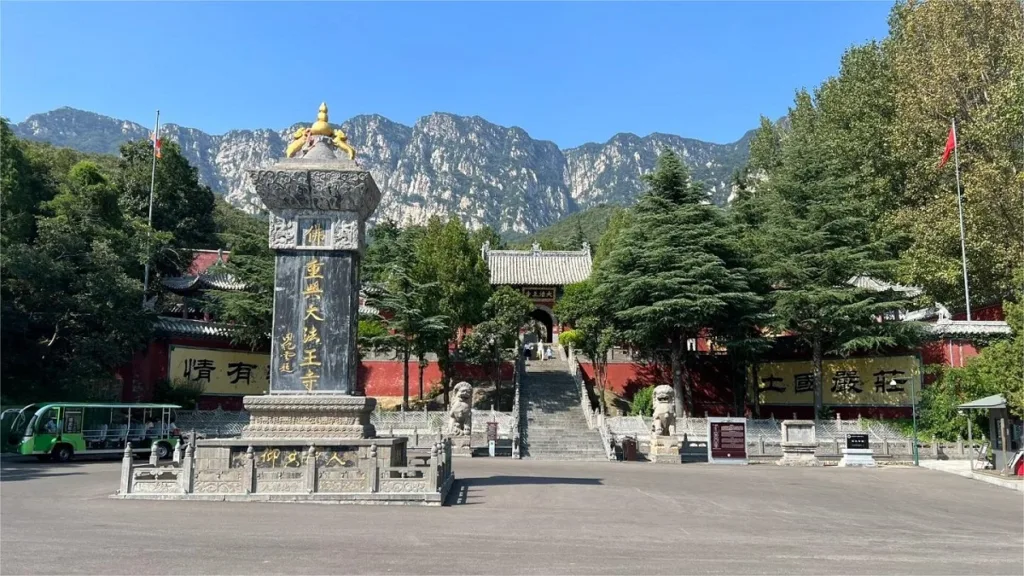
Fawang Temple

Huishan Temple
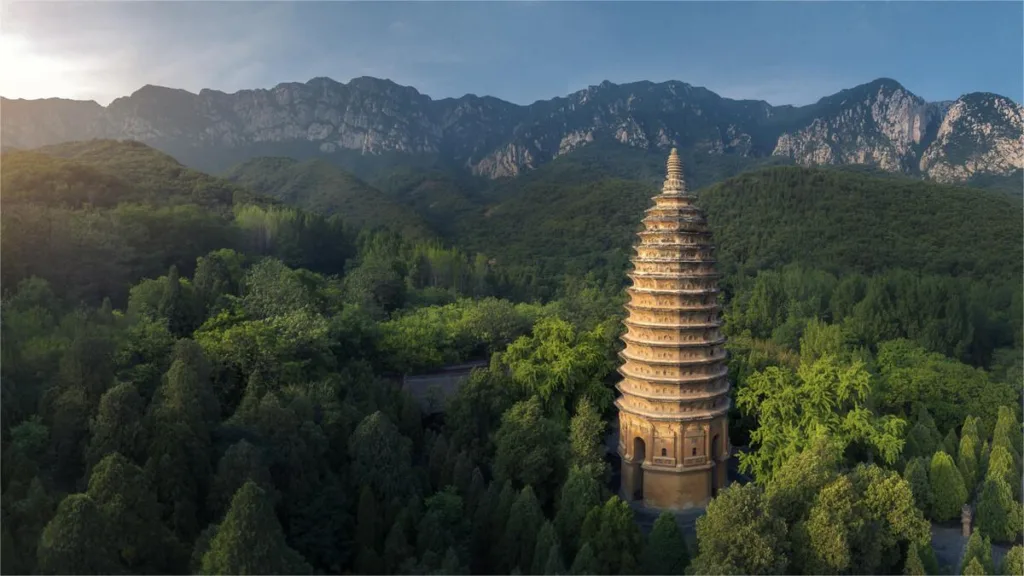
Songyue Temple and Songyue Pagoda
Исторические достопримечательности Хэнани, Достопримечательности Чжэнчжоу